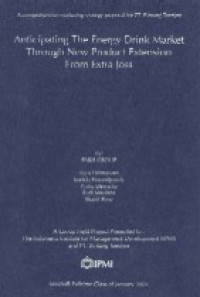
An examination of development in the Indonesian banking indutry
| Gmd : Text
| Availability :
| 00000010144 | 56 | (GFP) | Available - Ada |
The development of the Indonesian banking industry cannot be separated from the role of the government. The aims of the regulations issued by monetary authorities from time to time are intended to improve the banking industry, to reduce the degree of the dependency of the banking industry on the central banks subsidized liquidity credit, to mobilize and utilize idle public funds in supporting country development and to protect public interest. However, each regulation has excessive impacts on the banking sector itself and the Indonesian economy as a whole as the government still does not have a "perfect" tool to control the country's monetary policy. It creates a condition where direct interference from the government is still required from time to time in order to correct the excessive and unanticipated impacts.
Paktri 1991, current tight money policy and the international economic condition lead us to the conclusion of the outlook of the Indonesian banking industry as follows:
1. Limited growth of the Indonesian banking industry. Stricter government criteria in measuring the soundness of a bank will certainly limit the rate of growth of the banking sector:
a. To meet the 8% CAR by the end of December 1993 the banking industry will require fresh capital injection in the range of 2.4 to 3.8 trillion rupiah.
b. The stipulation of LDR leads to very selective loan policy and strong pressure to develop the secondary bond market and SBPU's in the security market.
c. It is still in question whether the recent consensus among the banks to lower deposit interest rates will be successful or not.
d. The above consensus to reduce interest rates can lead foreign investors pull their money out from Indonesia.
e. The government will have to choose either to reschedule the mega projects or to issue the "guidance" to limit offshore borrowing.
f. The newly established banks seem to have potential problems in terms of their human resources and staff hijacking will only be a history.
2. Banks' performance. The average Return on Assets and Return on Equity in the industry in 1990 were 1.1-5 % and 16.19 % respectively. In 1990, there were 26 banks that had less than 0.5 % ROA and 5.0 % ROE, for example: Bank Aken, Anromeda Bank, Anrico Bank, Bank Asiatic, Bank Gunung Kencana, Bank Nasional, Bank Pertiwi, Bank Sangga Kencana and NMB Indonesia Bank. Most of them are new banks except for Bank Nasional and Pertiwi. How long can these banks survive will still be a question and we can expect in the next two to three years some of them will fall.
Research location: PT. Multi Finas Perdana
Supervisor: Marita O'Sullivan
Accepted: August 1991.
| Series Title |
-
|
|---|---|
| Call Number |
56
|
| Publisher Place | Jakarta |
| Collation |
vii, 165p. : figs., tab. ; 27cm.
|
| Language |
English
|
| ISBN/ISSN |
-
|
| Classification |
-
|
| Media Type |
-
|
|---|---|
| Carrier Type |
-
|
| Edition |
-
|
| Subject(s) | |
| Specific Info |
-
|
| Statement |
-
|
| Content Type |
-
|
No other version available







